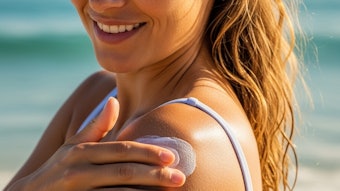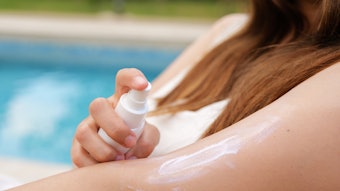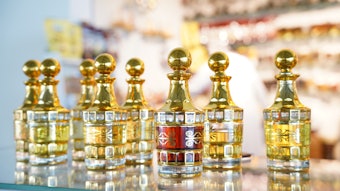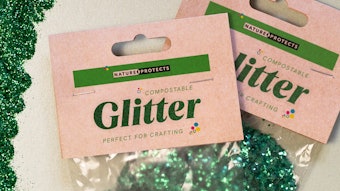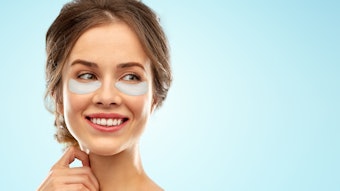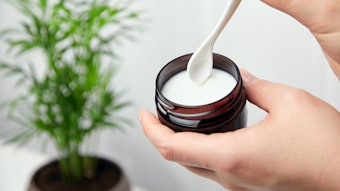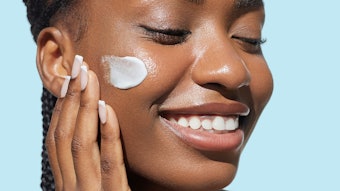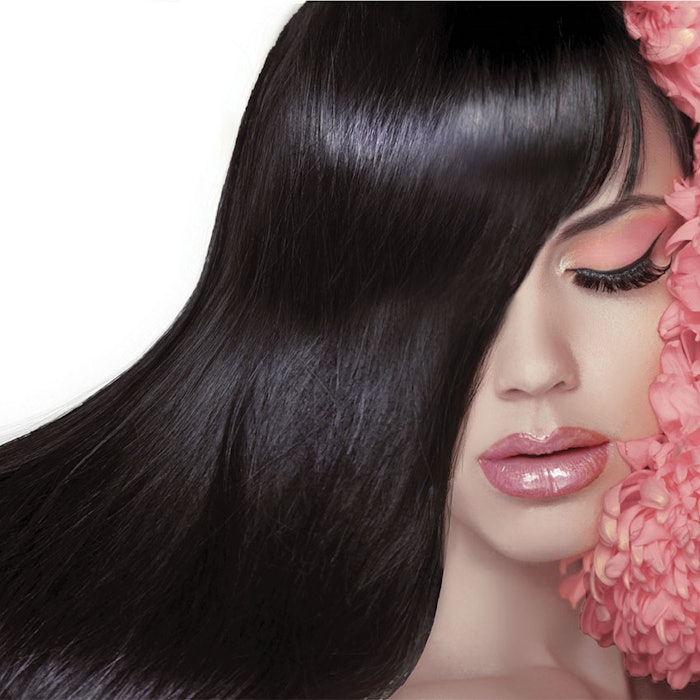
An important discovery of neurobiology in the last century is that no information is permanently retained in our brain that previously has not been worked out, at least partially, by our sensory perceptions. These mechanisms make sensory analysis an important investigation tool, which can be successfully applied to all products and manufactured articles that have some impact on our senses.
Sensory analysis today is a scientific subject. It is internationally recognized and regulated by several guidelines and applied to the study of the sensorial profile of products for their capability to induce visual, tactile, olfactory, auditory and taste perceptions.
The first scientific approaches to sensory analysis were initiated nearly 70 years ago and involved the food industry and its ingredients. Indeed, this was quite a forced step. To measure with bioengineering instruments the “chewability” of a biscuit or the “palatability” of an ice cream would have been a difficult task. Within the past 40 years, the cosmetic world began to investigate the enormous potential of sensory analysis.
The industry is now well-aware of the importance of offering products to consumers with a sensory profile that matches their expectations. Sensory analysis can adequately support advertising claims related to feel, appearance and perceived efficacy.1 For this reason, expanding the knowledge over what consumers feel and perceive is a key first step to achieving commercial success. In addition, becoming acquainted with the sensorial properties of a cosmetic formula allows the developer to fulfill consumer needs and ensure product characteristics meet their full potential.
The current challenge in investigating sensory characteristics is that doing so requires special care, not only because these characteristics set the acceptability of a product, but also because they are difficult to evaluate objectively. Sensorial analysis distinctly uses man as the measurement instrument; or rather, the senses of a panel of specifically trained evaluators.2 These individuals are expressly taught to objectively recognize, identify and quantify the perceived sensations. However, in order for the sensory evaluation to be realistic and efficacious, it should be disengaged from the different sensibilities and perceptions of even the most skilled evaluators.
This is made possible by the adoption of reliable, relevant and sound analytical methods. Precise standard protocols, the identification of individual evaluation sites and suitable booths for analysis are critical to obtaining reliable and strict results. The training of volunteers is also a key aspect to the whole procedure. During evaluations, panelists are led in order to ensure they use uniform terminology,3 they are capable of identifying sensory stimuli and that they properly use perception evaluation techniques, all while improving their sensorial skills. Indeed, sensory analysis is a scientific tool, effective and above all, versatile, that can provide tailor-made results for given information needs.
Hair Product Development and Sensory Tools
For hair products, as for all other cosmetic categories, several sensorial methods can be applied for their objective evaluation, both qualitative and/or quantitative, depending on the fixed objectives.4 The most frequent adoptions of sensory analysis are in styling and perming formulae, hair dyes, and cleansing products (shampoos) and conditioners. Moreover, many scalp care products can be optimized in this way.
Hair product tests may be carried out on tresses made of human hair or by directly applying products onto the heads of volunteers. For all clinical studies, on-head tests should be carried out in agreement with the principles defined by the World Medical Association in the Declaration of Helsinki concerning human volunteers, including obtaining their informed consent. The subjects are selected according to an appointed number of inclusion and exclusion requisites, following the product objectives and target. On-head tests may be performed in a half-head or whole-head manner. In the first case, two products are tested on each half of the head. With the whole-head protocol, only one sample is applied to the whole heads of each volunteer.
Testing Details
Treatment with the test product is carried out following precise protocols, in an attempt to standardize, as much as possible, the modality of use, with the goal of reducing all variables that could impair the reliability of results. In the case of a shampoo, for instance, one should define the exact amount of product to use, times and techniques for massage and rinse-off, the temperature and power of the water jet, the procedures for hair drying, e.g., heat, power, type and distance of the hair dryer.
In the case of hair dye products, it is necessary to standardize not only the ratio between the hair dye and the oxidizing solution, but also the mixing, application and rinse-off times, as well as the temperature and strength of the water jet, the procedures for drying and the possible use of warming lamps and their exposure time.
In general, any instrument used to prepare the samples to be tested or to carry out the evaluation should be standardized. From the brush to apply the dye to hair, and the comb used to distribute a conditioner, to the number of times hands are rubbed together before applying a hair gel, as well as the heat intensity, type and number of passes made with a warming plate. One should also not forget the pre-conditioning norms for volunteers. Therefore, it is necessary to standardize even the last hair cleansing operation by volunteers before starting tests—and recommend avoiding the use of any hair care or styling products.
Moreover, rooms where the evaluation takes place must be considered in detail,5 taking special care to remove foreign odors, to control the environmental temperature and humidity, and to ensure proper illumination, not influenced by the external weather. As general rule, the more factors are standardized, the more reliable and repeatable the test will be.
Expanding one’s knowledge over what consumers feel and perceive is a key first step to achieving commercial success.
Performing Evaluations
Evaluations are made by trained panelists who judge the product and its performance according to a check-list. Each panelist is working individually, while they all are following the same protocols of evaluation. As far as the evaluation parameters, it is possible to subdivide the evaluation in successive temporal steps: before, after, during and after the application. In reality, all consumers go through their sensory experiences following this same path but they behave in an unconscious and spontaneous way, without stopping in the moment to look at what they are doing. On the contrary, panelists are required to be highly aware throughout the experience, so by subdividing the evaluation into steps, they can better focus on each perception.6
First, a product’s visual impact is considered, i.e., all the sensations induced by the observation of the product. Then, the tactile, visual and olfactory perceptions that develop during the product application. Finally, collective perception elements are considered, usually referred to as after-feel, which develop and persist for some time after use of the product.
In detail, for a shampoo test,7 one could start by evaluating the color, the product gloss, the body and perfume intensity. Other possibilities are the investigation of sensations induced by the sight and touch of the packaging materials and convenience of use. In a second phase, one could take into account the speed of foam development, its amount and compactness, its bubble dimension and ease of rinsing it off. In the last step, one should consider parameters like combability (on wet and dry hair), shine, softness, volume, fly-away and residual perfume on the hair.8
For a hair dye, the key sensory parameters are the color and body of the product, the ease of blending with the oxidant fluid and the viscosity of the blend. In a second phase, the ease of application can be determined, together with the appearance of the blend during laying, the perfume intensity, the oxidation development and the ease of rinsing it off, meaning the time necessary to remove all residue from the skin. Finally, in addition to the parameters already mentioned for shampoos, one could evaluate the color performance, in terms of tone intensity over roots, lengthwise and tips, the correspondence with the color portfolio, the covering power and/or lightening results and the residues of color trace on the scalp.
On-head Tests
One advantage of an on-head test over tress tests is the ability to operate under the real conditions of a scalp, including influencing factors such as sebum and the scalp surface characteristics. Another advantage is the wide choice in hair types available for in vivo testing, in comparison with the restricted selection of hair tresses offered by the market. This enables the product developer to select and test precise or special hair characteristics. Moreover, when testing with “live” hair, it is possible to evaluate the product’s influence over features such as split ends, or frizzy or worn out hair, which are difficult to investigate on hair tresses.
An additional advantage is the ability to carry out contemporarily objective and subjective evaluations. For example, once objective evaluations are made by the trained panelist, volunteers can be involved in self-evaluation tests. Here, they are asked to express their personal opinions about the characteristics and sensory performance of the formula by filling out a provided questionnaire.
On the other hand, the on-head evaluation has some drawbacks. For one, the wider variability of the starting characteristics of the selected sample of volunteers. This impairs control over the test parameters. Another is the limit on the number of test formulas; if using the half-head technique, a maximum of two formulas can be compared. Costs, difficulties in recruiting volunteers and panelist training time and effort are additional considerations. Moreover, the total times for organizing and performing tests are longer than for tress tests.
Hair Tress Tests
Test on hair tresses are carried out using virgin hair, i.e., hair that has never been damaged by harsh chemical treatments. Tresses are available in various lengths, dimensions, weights and natures; for example, straight or curly; brown, blond or dark, in several hue variants (light, medium, black); bleached blonde, gold or platinum; and even containing variable percentages of white hair, from 10% up to 90%.
The rules of standardization also to this type of test. Consequently, it is fundamental to select tresses of the same type, weight and length and submit them to standard pre-treatments by cleansing with a 15% aqueous solution of sodium lauryl sulfate. Also, in this case, the amount of surfactant, the time of massage with the solution, and the rinsing and drying conditions should be kept constant for all the types of tresses. Treatment with test products are then carried out in agreement with the set protocols and standard items, as in the case of on-head tests.
For tress tests, volunteers are not required, except for the panelists involved in objective evaluations of the treated tresses, who follow strict protocols. The objectivity of the evaluation is additionally safeguarded via blind assessments using numeric codes.
The main advantage of this test is the ability to adopt controlled conditions, thanks to a better homogeneity of the initial hair state. Then again, tress tests cannot account for sebum and any other materials adsorbed onto the scalp surface. However, multiple comparisons can be made with tress tests, which is useful in the initial phases of product development, when several prototypes must be compared at the same time. Furthermore, without volunteers, time and costs are reduced for the organization and implementation of tests. And many of the same parameters that can be measured in vivo are still possible with hair tresses; excluding volume, split ends and the effects of restructuring and reinforcing treatments.
One advantage of an on-head test is the ability to operate under the real conditions of a scalp, including sebum.
The ‘Salon’ Test
A third type of sensory evaluation for hair products is the so-called salon test, which enables the evaluation of sensorial characteristics and performance through the judgement of an expert evaluator: the hairdresser. This test has the same characteristics of an on-head test, as far as volunteer selection is concerned; the possibility to make a half or a whole head test;9 the standardization of the sample application; and the definition of the evaluation protocols.
One unique characteristic of this approach is that parameters are drawn by the technical evaluation of one expert individual only. Therefore, he or she simply cannot be objective. As in all expert’s evaluations, they are challenged by subjectivity; the lack of common normalization procedures and of training with other experts; personal preferences or dislikes; and records of evaluation, which are usually verbal.
Regarding hair dyes, however, the hairdresser’s judgement has the advantage of their professional skill. A panelist could never reach such a level, simply because of the short training compared to the everyday professional activities of a hairdresser. Indeed, the precise evaluation of color reflex and tones requires daily practice, as happens with makeup products. A key disadvantage is the inability to carry out statistical analyses, as the assumptions required by this tool mandate. Also, in a salon test, it is even more important to keep the absolute anonymity over the test samples, to guarantee independence from brand bias.
Conclusions
Sensory evaluations allow for designing the complete sensory profile of hair products. Frequently, it is necessary to carry out a combination of these different evaluations; for instance, associating a test on tresses to a salon test—and perhaps completing the system with a subjective evaluation. While the whole procedure may appear complex, it is a key to open the door of market success.
References
- ASTM E1958–16a, Standard guide for sensory claim substantiation
- International Standard ISO 8586, Sensory analysis–General guidelines for the selection, training and monitoring of selected assessors and expert sensory assessors (2012)
- ASTM E253–16, Standard terminology relating to sensory evaluation of materials and products
- International Standard ISO 6658, Sensory analysis–Methodology–General guidance (2005)
- International Standard ISO 8589, Sensory analysis–General guidance for the design of test rooms (2007)
- M Morten, GV Civille and T Carr, Sensory Evaluation Techniques, 4th edn, CRC Press, Boca Raton, FL USA (2006)
- ASTM E 2082–12, Standard guide for descriptive analysis of shampoo performance
- ASTM E2049–12, Standard guide for quantitative attribute evaluation of fragrance/odors for shampoos and hair conditioners by trained assessors
- M Wong, Cleansing of hair, in DH Johnson, ed, Hair and Hair Care–Cosmetic Science and Technology Series, Marcel Dekker, NY 17(3) (1997) pp 42-3



